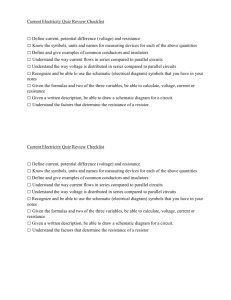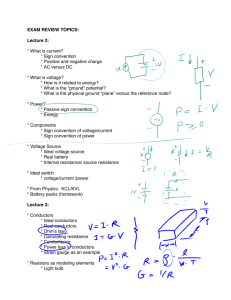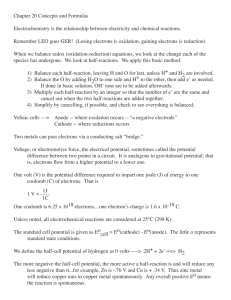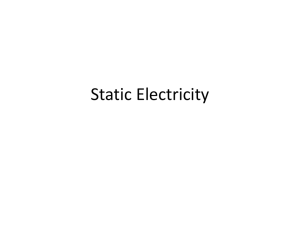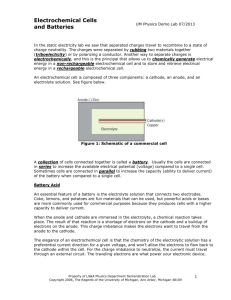Basic Electricity A beam of electrons passing between parallel
advertisement
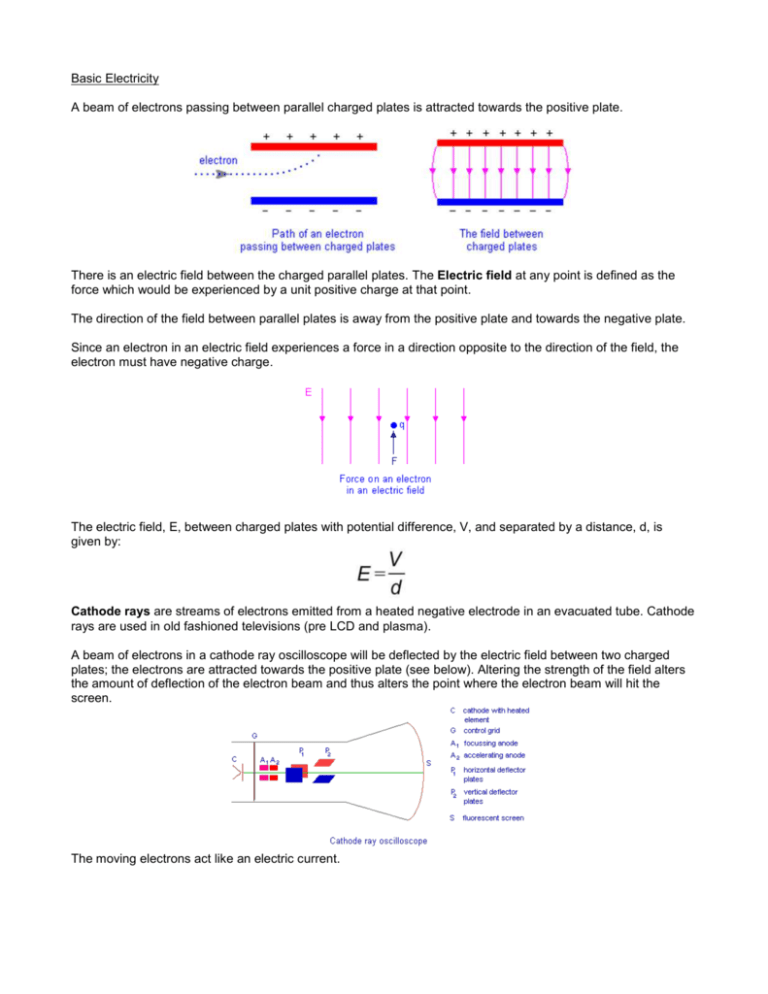
Basic Electricity A beam of electrons passing between parallel charged plates is attracted towards the positive plate. There is an electric field between the charged parallel plates. The Electric field at any point is defined as the force which would be experienced by a unit positive charge at that point. The direction of the field between parallel plates is away from the positive plate and towards the negative plate. Since an electron in an electric field experiences a force in a direction opposite to the direction of the field, the electron must have negative charge. The electric field, E, between charged plates with potential difference, V, and separated by a distance, d, is given by: Cathode rays are streams of electrons emitted from a heated negative electrode in an evacuated tube. Cathode rays are used in old fashioned televisions (pre LCD and plasma). A beam of electrons in a cathode ray oscilloscope will be deflected by the electric field between two charged plates; the electrons are attracted towards the positive plate (see below). Altering the strength of the field alters the amount of deflection of the electron beam and thus alters the point where the electron beam will hit the screen. The moving electrons act like an electric current. Electric Current Conductors such as metals also allow the flow of charge. A current in a metal conductor is the movement of negatively charged electrons from one point to another. The movement of charge transfers energy. For current to flow there must be an energy source and an uninterrupted conducting path for current Current is defined as the rate of flow of charge where (Where I is current, q is charge and t is time) Current flow is measured using an ammeter placed in series. Current is measured with an ammeter. An ammeter which has a very low resistance is placed in series with the resistor. Ammeters have different ranges from A (10-6 A or one millionth of an amp), mA (10-3 A) up to perhaps 30A. They are normally fused to protect them since they have a low resistance and are easily damaged – the fuse breaks as opposed to the expensive meter. Conventional current The direction of the conventional current flow is the direction in which a positive charge would move in a circuit from the positive terminal of the battery. In the early days of electrical investigations it was known that something was moving in an electrical circuit but the direction was uncertain. It was assumed that it was positive charge moving from positive to negative. It was realised about the beginning of the twentieth century that this was in fact incorrect. The current consists of negative electrons moving from negative to positive. This is called real current. However, conventional current is still used in all circuit diagrams – even though it is wrong. There are actually some arguments for its direction in terms of energy. Voltage around a circuit The voltage (more correctly called the potential difference) is the ratio of the useful energy carried, to the number of charges carrying it. The units of voltage are volts or joules per coulomb. Voltage is measured using a voltmeter. A voltmeter which has a very high resistance is placed in parallel between the two points in question. This is because you are measuring the difference in energy levels at the two ends of the conductor. Measuring current and voltage simultaneously: Usually when you measure electricity, there is also a load, e.g. a light bulb, where the electrical energy is transformed into another useful form such as light or heat. Measuring current and voltage Components in circuits use energy, they oppose current flow. This opposition is the resistance of the component measured in ohms. In some materials a very large amount of energy is needed to move charges; these are the group called insulators. In others, charge moves easily with small energy input and this group are called conductors. Within each group there is much variation. Conductors in which there is a linear relationship between voltage and current are said to be ohmic. The resistance for ohmic conductors can be found from the gradient of the voltage-current graph or using the following formula of Ohm’s law: The resistance of a conductor depends on its material, its length and its area of cross-section: The resistivity of a material depends on whether its gold or silver or any other material. When resistors change temperature, their resistance changes – they stop being ohmic conductors. Ohmic conductors have a linear relationship between voltage and current Non-ohmic conductors do not have a linear relationship. For non-ohmic conductors, the resistance cannot be found from the gradient of the voltage-current graph. The resistance has to be calculated by using corresponding voltage and current values, or by measuring the resistance directly using an ohmmeter. Energy transfer in DC circuits Anything which resists current flow loses energy. This energy is lost in the form of heat. The rate of transfer depends on the number of charges flowing in one second and the quantity of energy each charge carries. The number of charges flowing in one second is called the current. The voltage is the ratio of the useful energy carried, to the number of charges carrying it.



